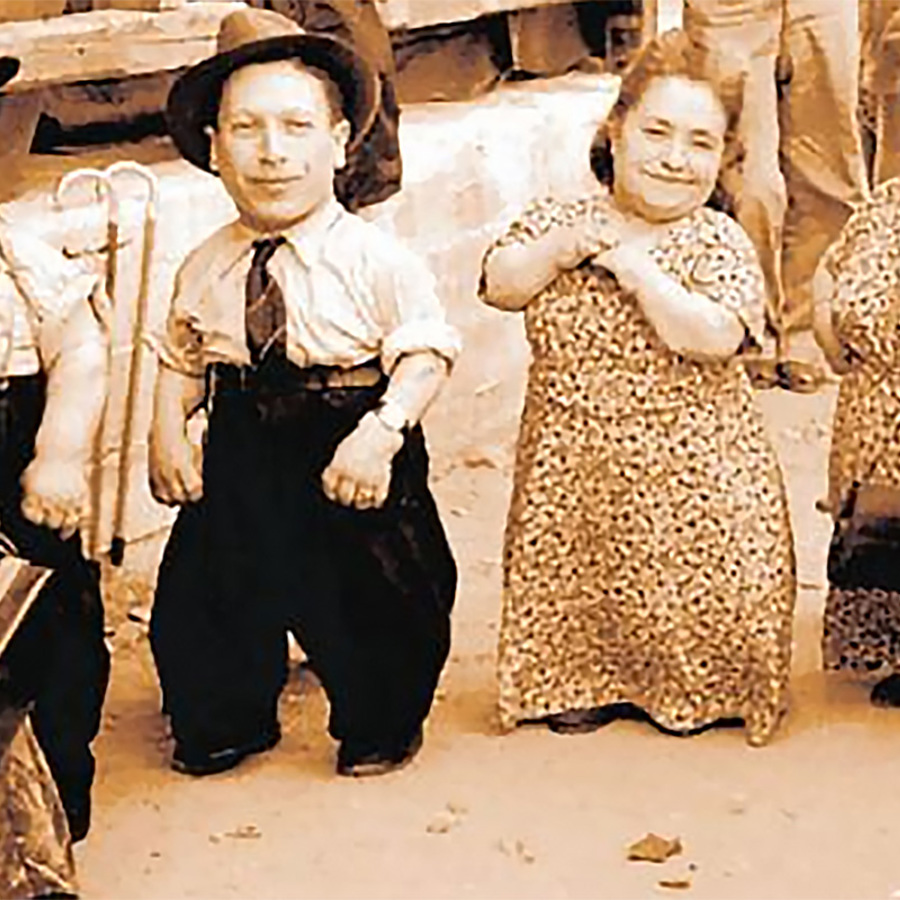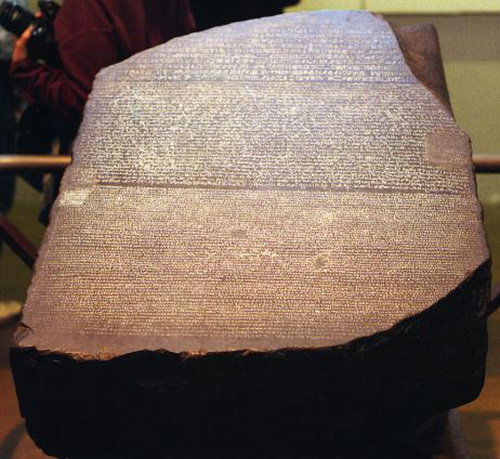
How can 2 parents with dwarfism have a child that is of average height?
June 23, 2006

- Related Topics:
- Height,
- Genetic conditions,
- Autosomal dominant inheritance,
- Dominant and recessive,
- Mutation
A high school teacher from Pennsylvania asks:
This is a great question. It can be hard to think about how this could happen. If the parents have dwarfism, the kids should too, right?
Well, no. This is only true of recessive traits. Dwarfism is most commonly a dominant trait.
Very useful answer, huh? Let's dig a little deeper to find out what the answer really means.
Inheriting a dominant trait
We have two copies of most of our genes -- one from mom and one from dad. And our genes can come in different versions called alleles.
For example, there is a gene called FGFR3. Most people have versions of this gene that result in average height. But some versions can lead to a type of dwarfism called achondroplasia.
(I should also point out that achondroplasia isn’t the only type of dwarfism. But since it is the most common type, that’s what I’m going to focus on in this answer. The Little People of America’s Medical Resource Center has a long list of the many types of dwarfism, if you want to read more!)
People with achondroplastic dwarfism have one copy of FGFR3 that causes dwarfism and one that does not*. In genetics speak, this means that the dwarfism version is dominant to the other, more common version.
Now imagine two parents with achondroplastic dwarfism. Which copy of a gene we get from our parents is random. So for this discussion, each parent has a 50-50 shot of passing down a copy that does not lead to dwarfism.
What this means is that 25% of the time, the child will get a copy of the average height gene from both parents. The result will be a child of average height.
So that explains that. Two parents with dwarfism can have a child of average height because the parents are carriers of that trait.
But wait a minute. If dwarfism is dominant, where does it come from in the first place? Do people with dwarfism always have little people as parents? No.
Dwarfism usually not inherited
Around 7 out of 8 cases of dwarfism result from DNA changes in the FGFR3 gene that appear out of nowhere. Literally. These changes (or mutations) happen in the sperm or the egg or very early on in development.
This brings up the very important point that genes are not written in stone. They are written in DNA. And DNA can change.

DNA is made up of four letters that spell out the instructions found in a gene for making a protein. A mutation happens when something in that series of letters changes.
Either one or more letters go missing, an extra letter or more is added, or the letters are changed to a different letter. These changes alter the instructions giving a different version of the protein.
Where do these changes come from? DNA can change because of something in the food we eat or the air we breathe, from sunlight, or a host of other environmental factors.
Or our cells can change the DNA accidentally. This happens occasionally when our cells copy our DNA. The copying process is incredibly efficient but still our cells occasionally put in the wrong letter. All the cells that come from that cell will now have that mistake.
Incidentally, mistake may be the wrong word to use. These "mistakes" are the stuff of all of the wonderful variety we see around us. They are responsible for big things like evolution and for little things like red hair, blue eyes, or dark skin. Thank goodness genes are made of DNA and not stone!
So there you have it. Two parents with dwarfism can have a child of average height because dwarfism is a dominant trait.
And the parents probably did not inherit their dwarfism from their parents. At some point early in development, their FGFR3 gene picked up a DNA change that led to dwarfism.
---
*If both copies lead to dwarfism, then the baby will be either stillborn or die shortly after birth.

Author: Dr. D. Barry Starr
Barry served as The Tech Geneticist from 2002-2018. He founded Ask-a-Geneticist, answered thousands of questions submitted by people from all around the world, and oversaw and edited all articles published during his tenure. AAG is part of the Stanford at The Tech program, which brings Stanford scientists to The Tech to answer questions for this site, as well as to run science activities with visitors at The Tech Interactive in downtown San Jose.
 Skip Navigation
Skip Navigation
